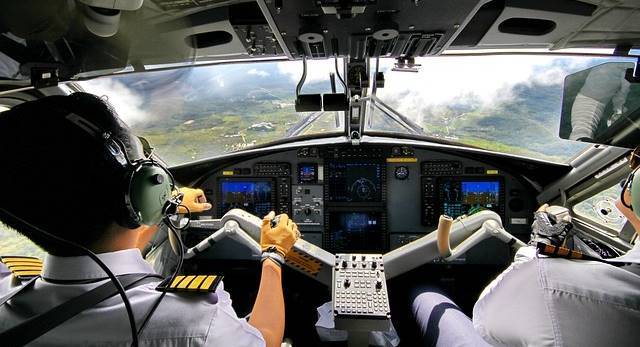Vertigo and Spatial Disorientation in Aviation: A Detailed Guide
Spatial disorientation and vertigo remain critical challenges in aviation, often leading to accidents when not properly managed. This article delves into the causes, types, and preventive measures of these conditions, offering detailed insights into their impact on pilots and overall flight safety.
What is Spatial Disorientation?
Spatial disorientation occurs when a pilot cannot correctly interpret their position, motion, or altitude relative to the Earth or their surroundings. It is particularly common during low visibility conditions or at night when visual cues are limited.
Key Causes:
- Sensory Misinterpretation: The human body relies on three systems for spatial orientation:
- Vestibular system (inner ear): Detects changes in motion and gravity.
- Somatosensory system: Provides body position feedback based on touch and pressure.
- Visual system: Offers orientation through visual cues. In aviation, discrepancies between these systems can lead to disorientation.
- Environmental Factors:
- Flying in clouds, fog, or at night eliminates external visual references.
- Rapid altitude and speed changes affect the vestibular system.
- Fatigue and Stress: These impair a pilot’s ability to process sensory inputs accurately.

What is Vertigo in Aviation?
Vertigo in aviation refers to dizziness or the sensation of spinning, often caused by the vestibular system receiving conflicting signals. Pilots can experience this during maneuvers that involve abrupt accelerations or decelerations.
Common Triggers:
- Rapid turns or changes in direction.
- Sustained spinning, as in aerobatics.
- Deviation from level flight in poor visibility.
Types of Spatial Disorientation
Spatial disorientation can be categorized into three types:
- Unrecognized Disorientation:
- The pilot is unaware of their disorientation and continues flying based on incorrect assumptions.
- This is the most dangerous form, often leading to controlled flight into terrain (CFIT).
- Recognized Disorientation:
- The pilot realizes something is wrong but struggles to correct their position.
- Incapacitating Disorientation:
- The pilot becomes completely unable to reorient themselves, requiring intervention from co-pilots or autopilot systems.
Impact on Flight Safety
The FAA reports that spatial disorientation is a contributing factor in 5-10% of aviation accidents, with a 90% fatality rate. Notable incidents include:
- John F. Kennedy Jr.’s crash in 1999, attributed to spatial disorientation during nighttime flight over water.
- Air France Flight 447 (2009), where confusion over instrument readings led to a fatal stall.

Prevention and Mitigation Strategies
1. Instrument Training
- Pilots must rely on instruments rather than their senses during low visibility. Regular simulator training enhances this skill.
2. Understanding Illusions
Common illusions include:
- The Leans: A slow turn is mistaken for level flight, causing abrupt overcorrections.
- Coriolis Illusion: A head movement during constant acceleration causes a sensation of tumbling.
- Somatogravic Illusion: Acceleration mimics the feeling of climbing, leading to dangerous nose-down corrections.
3. Use of Autopilot
- Advanced autopilot systems can maintain stability, reducing the risk of disorientation.
4. Crew Resource Management (CRM)
- Effective communication between crew members ensures quick identification and correction of orientation errors.
5. Health and Fitness
- Staying fit, hydrated, and well-rested minimizes the effects of fatigue and enhances sensory processing.
6. Situational Awareness
- Regularly cross-checking instruments and external references maintains orientation.
Future of Mitigation: Technological Advancements
Emerging technologies such as enhanced vision systems (EVS) and synthetic vision systems (SVS) are improving pilots’ situational awareness by projecting clear terrain and horizon visuals regardless of external conditions.
Conclusion
Spatial disorientation and vertigo pose significant challenges to aviation safety. By understanding their causes, recognizing the signs, and implementing preventive measures, pilots can mitigate these risks and ensure safer flights. Continuous training and advancements in technology will play a vital role in addressing these issues.


